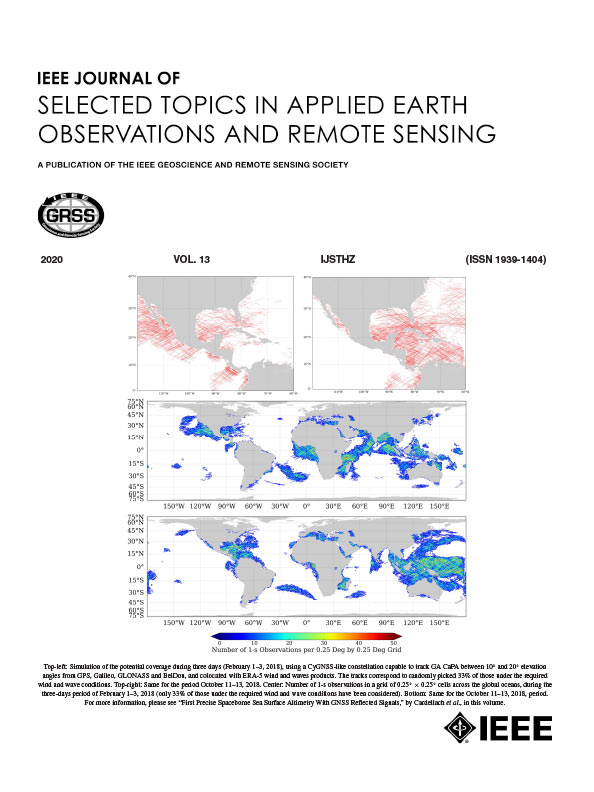Multisensor Data Fusion for Coastal Boundary Detection by Res-U-Net Implementation Using High-Resolution UAV Imagery
IF 5.3
2区 地球科学
Q1 ENGINEERING, ELECTRICAL & ELECTRONIC
IEEE Journal of Selected Topics in Applied Earth Observations and Remote Sensing
Pub Date : 2025-07-01
DOI:10.1109/JSTARS.2025.3584853
引用次数: 0
Abstract
Environmental planning, hazard monitoring, and coastal management depend critically on accurate shoreline definition. This work utilizes high-resolution UAV data to develop a deep learning framework based on a Residual U-Net architecture for shoreline semantic segmentation. The proposed model integrates residual learning blocks into the conventional U-Net architecture to enhance gradient flow, improve feature extraction, and preserve fine boundary details in challenging coastal settings. Under a supervised learning framework, the model has been trained and validated using a dataset including UAV-acquired photographs and manually annotated shoreline masks. The preprocessed input data has been reinforced by geometric adjustments and contrast normalizing to improve resilience and generalization. The Adam optimizer and binary cross-entropy loss helped the model be trained across 150 epochs. F1-score and intersection over union (IoU) measures have been used in quantitative performance evaluation. With a peak validation F1-score of 0.9483 and an IoU of 0.9018, the findings demonstrate that the Residual U-Net achieves great segmentation accuracy, showing robust spatial alignment with ground truth annotations. Visual analysis of the expected masks confirmed the approach’s applicability to real-world situations by revealing consistent coastline localization throughout diverse environmental circumstances. This work presents a scalable and accurate method for operational shoreline monitoring, demonstrating the potential of deep residual structures for coastal boundary mapping using UAV platforms. Large-scale geospatial analytics and real-time coastal change detection can both benefit from the framework’s extension to multitemporal and multisensor data.基于Res-U-Net的高分辨率无人机图像海岸边界检测多传感器数据融合
环境规划、灾害监测和海岸管理关键取决于准确的海岸线定义。这项工作利用高分辨率无人机数据开发了一个基于残差U-Net架构的深度学习框架,用于海岸线语义分割。该模型将残差学习块集成到传统的U-Net架构中,以增强梯度流,改进特征提取,并在具有挑战性的沿海环境中保留精细的边界细节。在监督学习框架下,使用包括无人机获取的照片和手动注释的海岸线掩模在内的数据集对模型进行了训练和验证。预处理后的输入数据通过几何调整和对比度归一化进行增强,以提高复原力和泛化能力。Adam优化器和二元交叉熵损失帮助模型跨越150个epoch进行训练。F1-score和intersection over union (IoU)测度被用于定量绩效评价。残差U-Net的峰值验证f1分数为0.9483,IoU为0.9018,结果表明残差U-Net具有很高的分割精度,与地面真值标注具有鲁棒的空间对准性。对预期掩模的视觉分析证实了该方法在现实世界中的适用性,它揭示了在不同环境下一致的海岸线定位。这项工作提出了一种可扩展和精确的岸线监测方法,展示了使用无人机平台进行海岸边界测绘的深层残余结构的潜力。大尺度地理空间分析和实时海岸变化检测都可以从框架扩展到多时间和多传感器数据中受益。
本文章由计算机程序翻译,如有差异,请以英文原文为准。
求助全文
约1分钟内获得全文
求助全文
来源期刊
CiteScore
9.30
自引率
10.90%
发文量
563
审稿时长
4.7 months
期刊介绍:
The IEEE Journal of Selected Topics in Applied Earth Observations and Remote Sensing addresses the growing field of applications in Earth observations and remote sensing, and also provides a venue for the rapidly expanding special issues that are being sponsored by the IEEE Geosciences and Remote Sensing Society. The journal draws upon the experience of the highly successful “IEEE Transactions on Geoscience and Remote Sensing” and provide a complementary medium for the wide range of topics in applied earth observations. The ‘Applications’ areas encompasses the societal benefit areas of the Global Earth Observations Systems of Systems (GEOSS) program. Through deliberations over two years, ministers from 50 countries agreed to identify nine areas where Earth observation could positively impact the quality of life and health of their respective countries. Some of these are areas not traditionally addressed in the IEEE context. These include biodiversity, health and climate. Yet it is the skill sets of IEEE members, in areas such as observations, communications, computers, signal processing, standards and ocean engineering, that form the technical underpinnings of GEOSS. Thus, the Journal attracts a broad range of interests that serves both present members in new ways and expands the IEEE visibility into new areas.

 求助内容:
求助内容: 应助结果提醒方式:
应助结果提醒方式:


